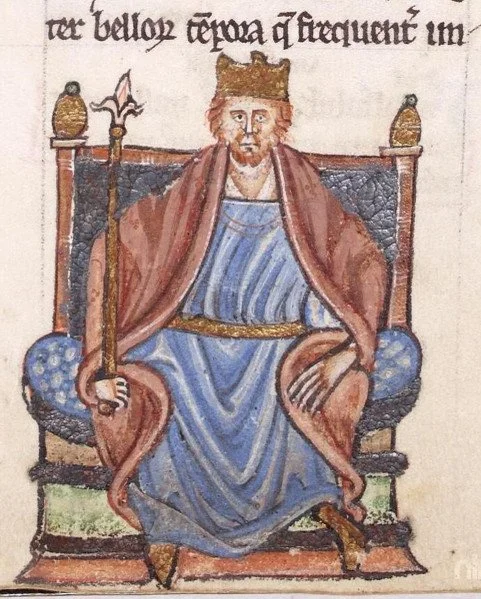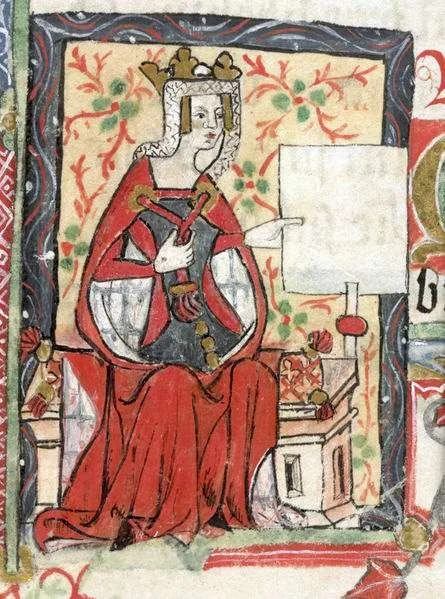Why the Angevins (Plantagenets) Ruled Half of Europe
First Blog in the Road to the Great Rebellion Series
Henry II King of England
The Angevin Empire: A Map.
When we think of medieval kings, we often picture a crown perched over a single kingdom. But Henry II of England—first of the Angevin kings—was no ordinary ruler. By the 1170s, he commanded more territory than any other monarch in Christendom, stretching from the wild hills of Northumberland to the sunlit vineyards of Aquitaine. His dominion was so vast that chroniclers called it an “empire,” though it was stitched together by marriage, inheritance, and sheer force of will.
So how did a French count’s son come to rule half of Europe?
From Count to King
Henry’s father, Geoffrey of Anjou, gave the dynasty its name: Angevin, “from Anjou.” (Geoffrey was also responsible for the more popularised, but less accurate ‘Plantagenet’ name.) But it was Henry’s mother, the indomitable Empress Matilda, who laid the foundation. As the only surviving legitimate child of King Henry I of England, she fought tooth and nail for her inheritance. Though she never wore the English crown, her son did.
Empress Matilda
By the age of twenty-one, Henry Plantagenet was not only Duke of Normandy and Count of Anjou but also King of England. His marriage in 1152 to Eleanor of Aquitaine—freshly divorced from King Louis VII of France—doubled his lands overnight. Suddenly, Henry held sway over nearly the entire western seaboard of France.
A Patchwork Empire
Henry II’s dominions were not a neat map of England plus France. They were a patchwork of fiercely independent regions, each with its own laws, customs, and proud identity:
· England – his crown jewel, wealthy and well-governed.
· Normandy – crucial for cross-Channel power.
· Anjou, Maine, Touraine – the heart of his inheritance.
· Aquitaine – vast, rich, and notoriously unruly, through Eleanor.
· Ireland and Brittany – newly pressed into the Angevin orbit.
To Louis VII of France, Henry was technically a vassal for most of these lands. But in reality, Henry’s strength dwarfed the French crown. Louis held only the tiny Île-de-France. No wonder he resented his former wife and her red-haired new husband.
Too Much to Rule
Such a sprawling empire was both a blessing and a curse. Henry spent his life racing from one frontier to another, stamping out fires: a baron’s rebellion here, a Breton rising there, quarrels with the Church in between.
But the greatest danger to Henry’s realm did not come from outside. It came from within—his own family. By 1173, his ambitious sons, egged on by Eleanor, Louis VII, and discontented barons, would rise against him in what history remembers as the Great Rebellion, or ‘The Revolt of the Eaglets.’
Why This Matters for Lady of Lincoln
In Lady of Lincoln, the opening volume of my Nicola de la Haye trilogy, this political background sets the stage for one young woman’s fight to keep her inheritance. Nicola’s world was shaped by Henry II’s empire: the shifting allegiances, the constant wars, and the question that haunted every noble family—who holds the castles?
Curious about the world that shaped Nicola de la Haye? Lady of Lincoln brings the Angevin Empire to life in historical fiction.
This blog series, The Road to the Great Rebellion, will follow the twists and turns that led to 1173. Each month, I’ll bring you deeper into the Angevin world, so when rebellion breaks out next spring—in our parallel timeline—you’ll see how the sparks were lit.
Next time: Princes Without Power: Why Henry the Young King Rebelled.


